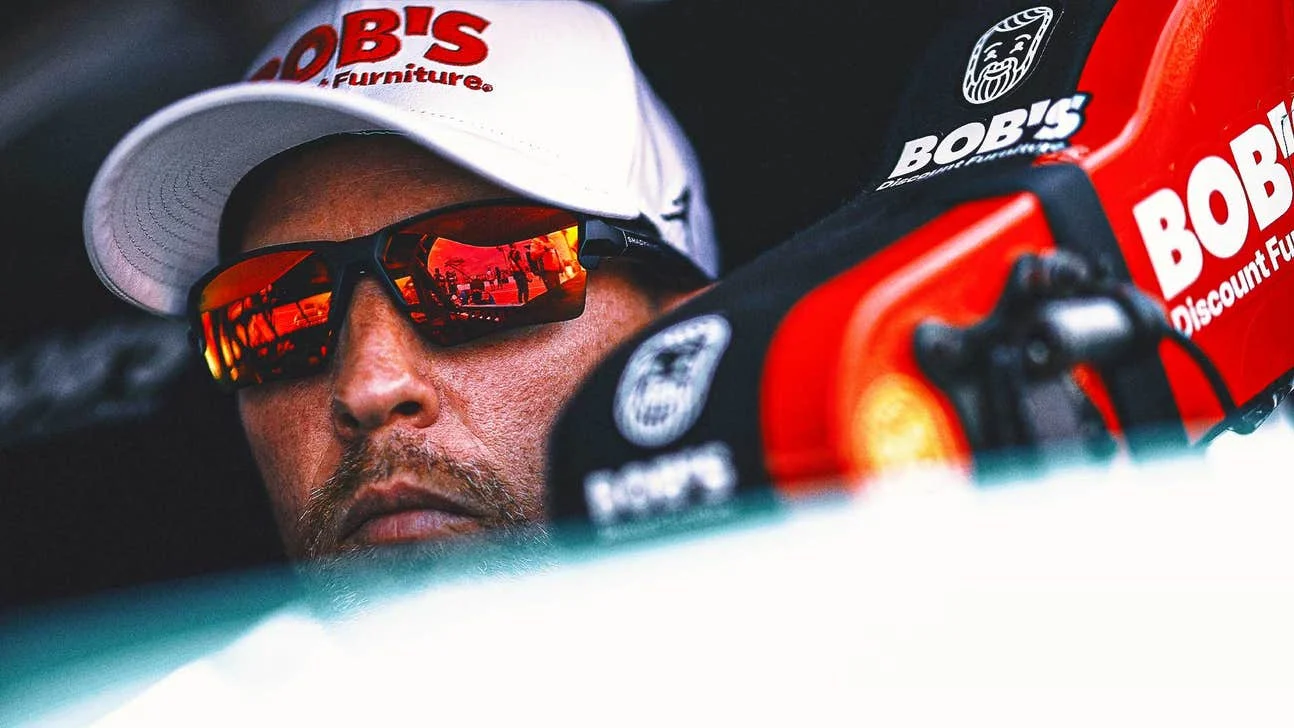Denny Hamlin is set to implement his unique Darlington race strategy as he starts from pole position during Sunday evening’s Cook-Out Southern 500 at Darlington Raceway, where drivers must adapt to shifting track conditions from sunlight to darkness. As Hamlin and his competitors prepare for the event, focus intensifies on how vision, tire degradation, and dropping temperatures will shape the contest at the famous South Carolina oval.
Managing Light and Track Conditions: The Core Challenge at Darlington
As the race transitions from late afternoon into nightfall, drivers like Hamlin are preparing to tackle both visibility changes and the challenges posed by Darlington’s distinctive 1.366-mile layout. Unlike typical circuits, the surface here is notoriously abrasive, causing teams to constantly assess tire wear while also monitoring how temperature fluctuations impact performance. The National Weather Service predicts a clear start in the mid-80s Fahrenheit, but by the race’s conclusion, drivers will face much cooler conditions, with temperatures potentially dipping to 58 degrees.
Hamlin’s adaptability under these unique conditions makes him a strong contender at this historic “track too tough to tame.” Over his Cup Series career at Darlington, Hamlin, representing Joe Gibbs Racing, has accumulated five wins, as well as 14 finishes in the top five and 19 in the top ten. Those accomplishments include a victory earlier this season, further cementing his reputation as one of the strongest drivers at the venue.

Hamlin’s Perspective: Tactics for Navigating a Dynamic Race
Starting at the front affords Hamlin a strategic advantage, especially as the race’s character shifts with the fading sun. Drawing on both experience and a strong qualifying performance, Hamlin emphasized his team’s mindset and approach.
“This track definitely goes through changes when rubber is on it versus not,”
—Denny Hamlin, Driver
His focus is on planning for both the opening laps—when sunlight presents one type of challenge—and the closing stages under artificial lighting, when the track’s behavior alters further. Hamlin and his crew adapt their adjustments at the start and monitor how the surface evolves with each lap.
“We always plan for the end of the race and we figure out how to make it work at the very beginning, so certainly, when you start up front like we are, that is going to help us band-aid the car for a little while until (the track) comes in.”
—Denny Hamlin, Driver
Learning from Recent Races and Rival Strategies
Recent history at Darlington has shown the benefits of a strong qualifying run and early pace. Hamlin referenced William Byron’s performance in the spring, when Byron claimed pole, led for most of the race, and became difficult to overtake until he encountered heavier traffic later in the event.
“We saw in the Spring the #24 (Byron) was hard to pass until he got in traffic and that is when it changed,”
—Denny Hamlin, Driver
Drawing inspiration from these dynamics, Hamlin’s pole-winning run serves as both a tactical move and a psychological boost for Sunday night’s contest. His aim is to control the race tempo from the outset, capitalizing on open track ahead before encountering lapped competitors.
“It could end on Lap 1, and we could be second, but you just never know. I feel like it gives you the advantage to set the pace and then once you get the lapped cars, hopefully, you have something left.”
—Denny Hamlin, Driver
What Awaits at Darlington: Strategy, Adaptability, and High Stakes
As drivers, pit crews, and crew chiefs prepare for a demanding night at Darlington Raceway, all eyes are on how Denny Hamlin’s Darlington race strategy will unfold. The combination of a pole position start, his accumulated experience, and real-time adjustments to the ever-changing racing surface present Hamlin and Joe Gibbs Racing with a promising outlook for a potential sixth win. The outcome will hinge on proactive decision-making, adaptability to evolving conditions, and the ability to execute under the pressure that defines the Cook-Out Southern 500.
